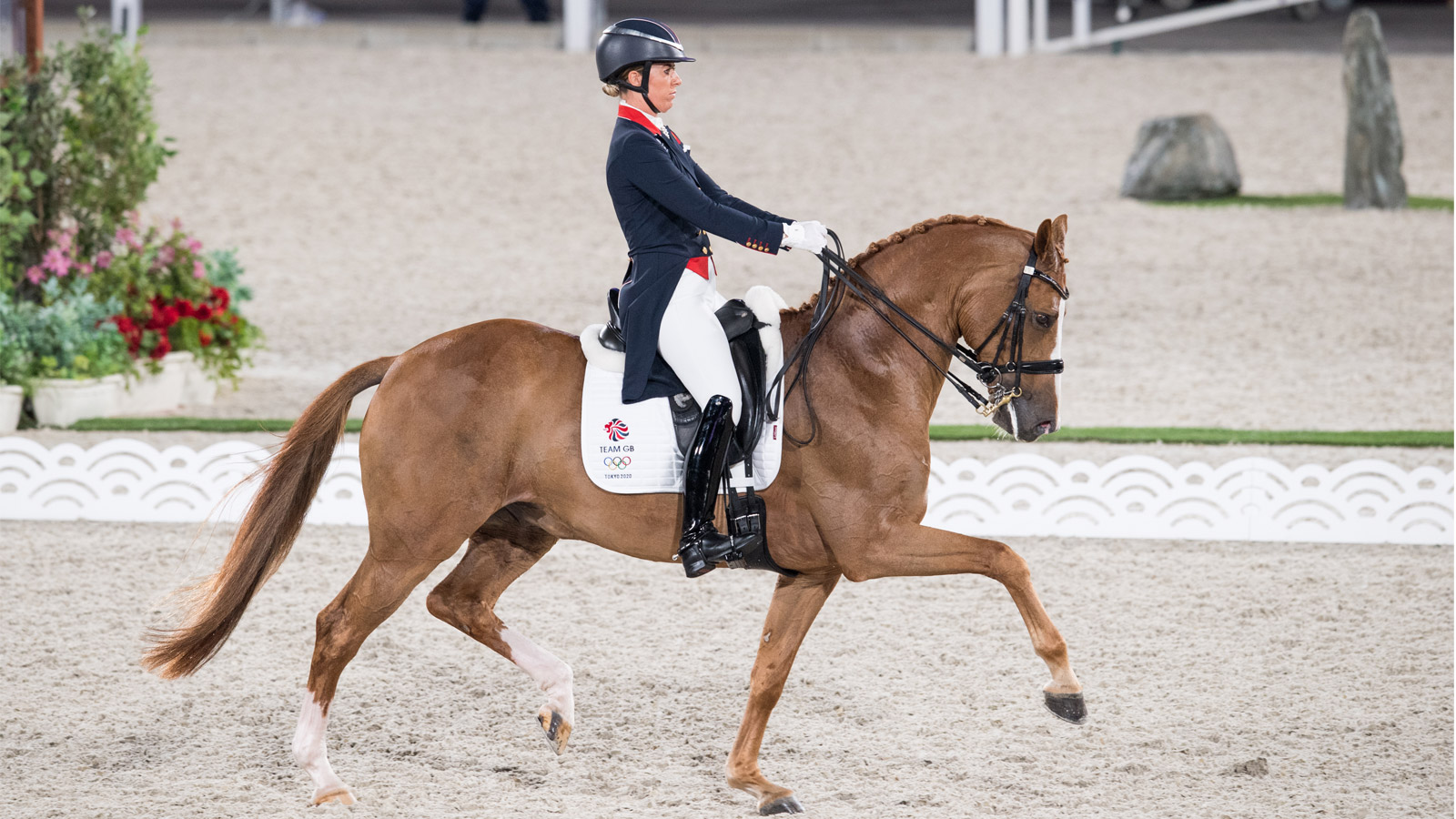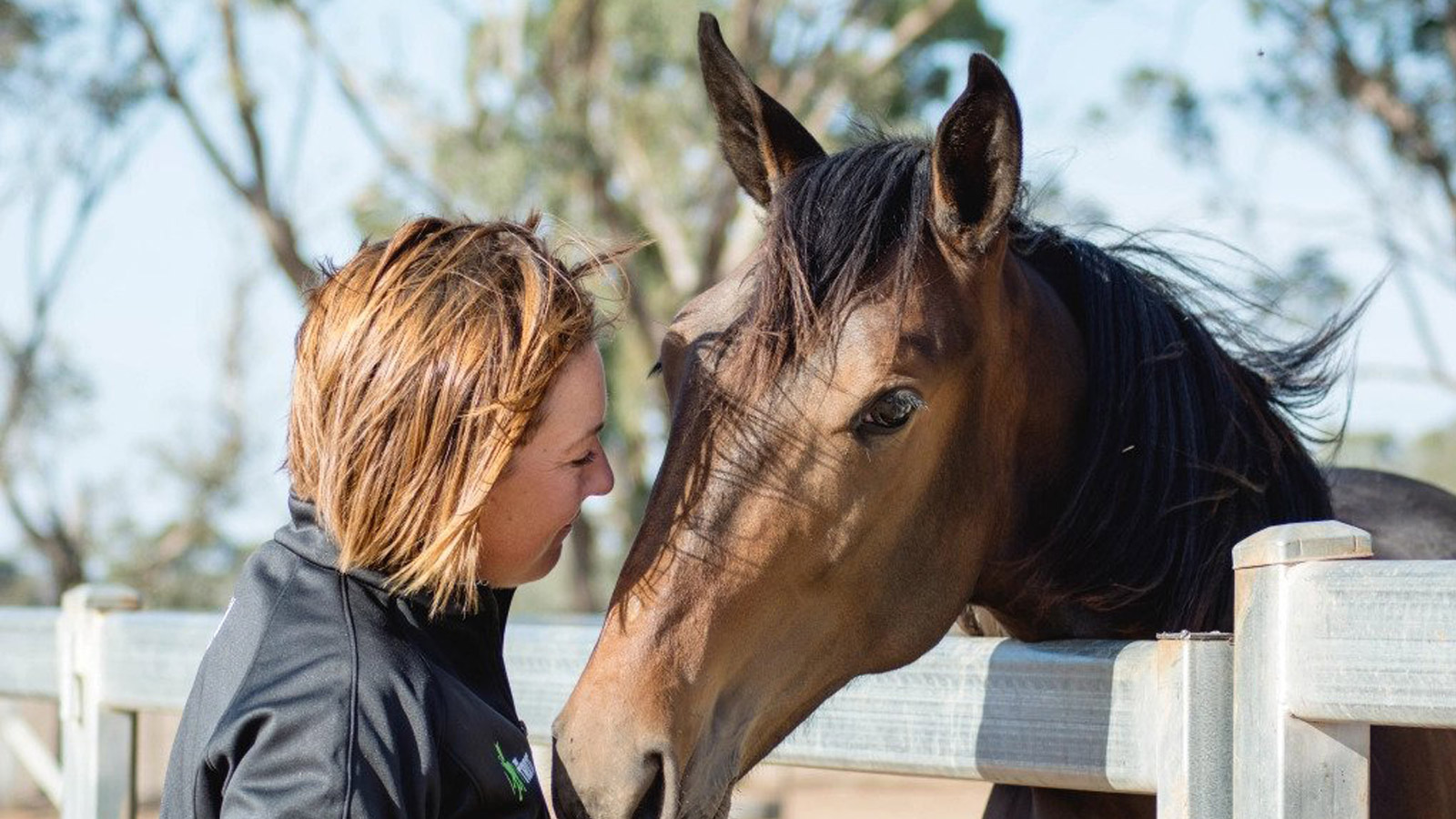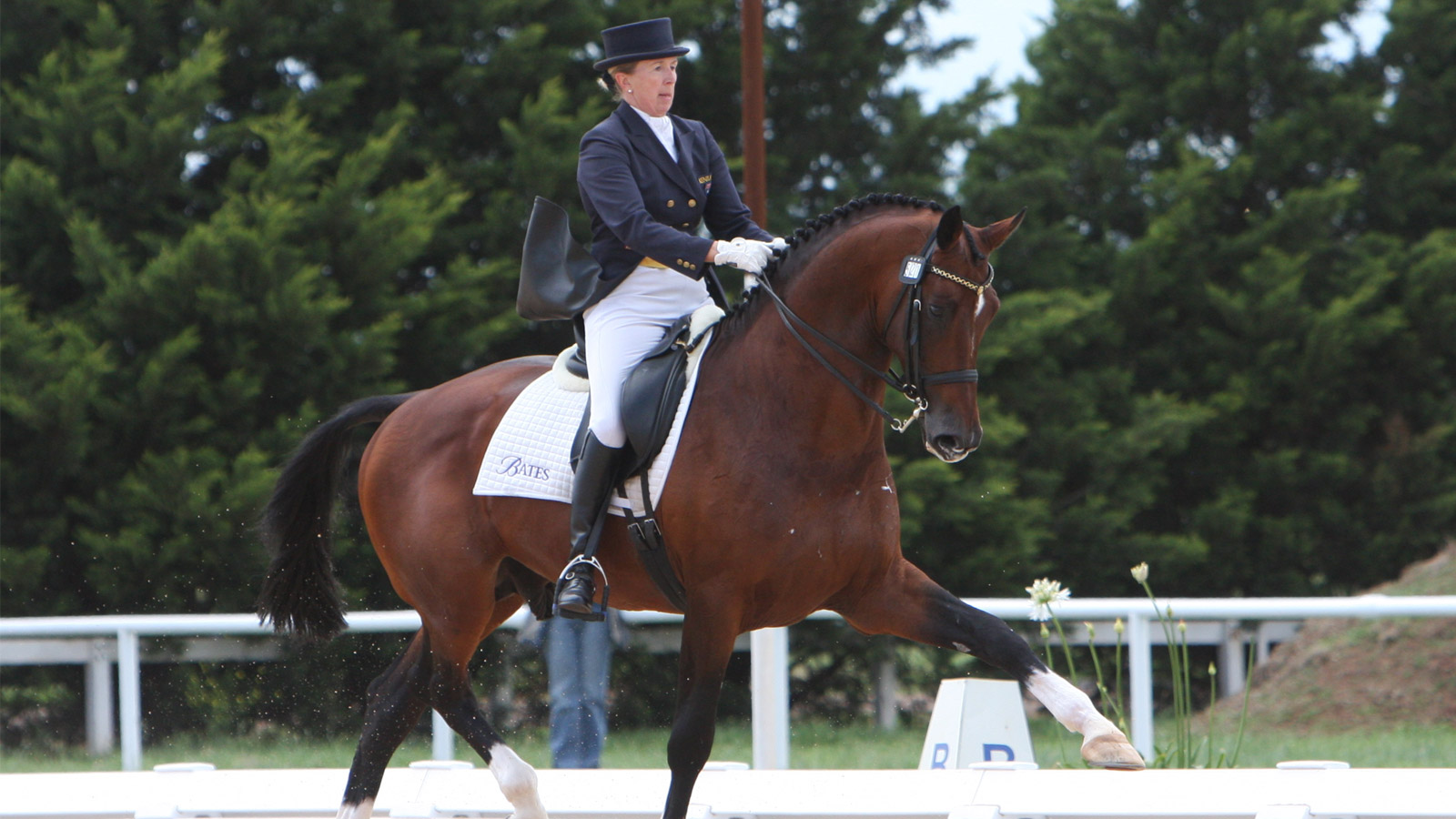Let’s get back to basics. We talk about our horses needing to be “on the bit”, but what exactly does this mean and how do we achieve it?

The nuchal ligament is a large, elastic structure in the dorsal cervical (upper neck) region and helps support the head and neck in the horse.
After the horse has learned to yield to pressure and understands the basic rein aids for stop, go and turn, he may be ready to start to understand that there is a more elastic connection with the rider.
Of course, that word “connection” is critically important. The physical connection between the horse and rider mirrors the connected relationship where the horse and rider sensitively and reciprocally respond and react together in a way that the horse develops the capacity to build better balance. The horse is “on the bit” when he reaches actively forwards into the bit, coming into rounder frame, his back lifting up. As his back lifts up, his pelvis tips under just a little, allowing the hind leg more freedom to step under the body of the horse. The nuchal ligament of the neck allows the muscles to be active but supple. The nose remains a little in front of the vertical.
Being on the bit is the precursor to collection. Once your horse knows how to stay on the bit you can influence him to build his capacity to balance with more collection, that is, more weight on the hind leg, and a shorter frame. When a horse is on the bit he is connected to the rider; he should be soft and supple and waiting for instructions. He has yielded to pressure both longitudinally (front to back) and laterally (side to side).
Getting your horse on the bit can be a real challenge if he hasn’t learned this yet. Of course, the rider must have a stable position in the body, hands and legs so that they are able to influence the horse sensitively. Stable hands come out of a stable core. Stable hands can sensitively encourage the horse to reach with confidence into the contact. If your hands are not steady and able to maintain a soft, even contact, the horse will not feel comfortable reaching into the contact. To stabilise the core, stretch up from the waist up, and down from the waist down; stretch the front of the thighs and the back of the calves so the leg stretches down underneath you so that you are in balance. If you want to influence your horse’s balance, you must be in good balance.
You must keep your reins short, reaching towards the horse’s mouth. The sense of reaching towards the mouth is very important. You are not pulling the horse into the frame that you want, rather you have short reins partly to keep the contact even. If you want to really establish this feeling of reaching to the bit, you can take a piece of rubber resistance band used for fitness training across his chest and into your hands.

Keep your reins short and reaching towards the horse’s mouth, like Charlotte Dujardin. © FEI/Shannon Brinkman.

If you want to really establish this feeling of reaching to the bit, you can take a piece of rubber resistance band used for fitness training across his chest and into your hands. Image supplied by Kerry Mack.
‘IN FRONT OF THE LEG’
The horse must actively be going forwards. He must be “in front of the leg”. Now, this is another silly dressage expression. It means that the horse is actively going forwards with purpose, and that when you ask for him to move more actively forwards, he reacts in a willing way without rushing or making the rhythm faster. Remember that rhythm is the first thing on the Training Scale. In fact, to teach the horse to go on the bit you want him to be really actively going forwards so much that he has to stretch and that the forwardness makes him straight. He should feel even in both reins. If he is going forward enough, he will reach into the contact.
A horse that is dawdling along can lift his head up and look around or push on one side of the bit or another. A horse that’s really pushing forwards with the hind legs – in a rhythm that allows the legs to fully swing through – will take his nose down and forwards, lifting his back and allowing his hind leg to come more forwards and push. He will actively reach into the bit, his nose in front of the vertical. Getting him really going forwards will help to make the right thing easy and the wrong thing (putting his head up or too far down and rolled under) difficult.
But to achieve the balance and self-carriage that is required, you can’t just go faster. If you just go faster you will run him off his legs and you may just drive him into your reins, making him heavy in the hand and out of balance.
So, rather than just hammering him forwards you must insist that he is responsible for his own balance and suppleness. You should ride lots of small transitions, up and back within the pace. Try riding a 20-metre circle. Ride a quarter of a circle going more actively forward, with longer steps, then a quarter of a circle with shorter steps, keeping the rhythm the same if you can. Keep repeating this until he understands that when he is doing shorter steps, he will be asked for longer steps and so he starts to expect that his balance will be challenged.

You can ride a 20 metre circle and put a 10 metre circle every quarter of a circle.
If he feels a bit like a plank to ride, balancing on your hands, just ask him to bend into a small circle. Keep the forward activity. Ride lots of circles with bend. Vary the size. You can ride a 20-metre circle and put a 10-metre circle every quarter of a circle. Ride these lines as smoothly as you can. You don’t want abrupt transitions or changes of direction that interfere with the rhythm and contact. If he is stiff and unyielding ask him to yield to the inside rein, bending his neck. A bent horse is a soft horse. If he doesn’t give to two reins lowering his head, just ask him to yield to the inside rein and bend.
GIVING TO THE REIN
Once he has given to the rein and softens to one rein, he is more likely to give to two reins. I suggest starting on the right rein as more horses find it easier to bend this way. If he is very resistant and stiff you may need to be strong and use a lot of pressure. When using pressure-release training you need to use enough pressure that he does yield, so you can reward him. Some horses will have learned to pull the rein. For example, racehorses are taught to do this, so if you are retraining you may need to be strong, but then very quick to reward, and repeat often.

At the start of the ride, Tori simply asks Bailey to go forwards with a light contact. Image supplied by Kerry Mack.

Tori bends him and keeps him in front of the leg. Image supplied by Kerry Mack.
Anytime he feels like he is reaching into your contact in a supple way, make sure that your hands soften. Relax your fingers but maintain a closed fist on the rein. Remember that we are using negative reinforcement here. We apply pressure with our aids to ask him to give to the pressure, for example, by asking him to bend in response to the rein. The most important thing then is to immediately release the pressure as soon as he gives to it. We can then repeat over and over again the application of pressure until he yields to it and then the release of pressure. It is the release of pressure that teaches him what we want.
We can apply pressure with our legs and with our hands. We can also apply pressure in the lines that we ask for. For example, if you are happy that he is softly reaching for the contact, we might just allow him to go around the edge of the arena. But if he is resistant, perhaps putting his head higher than we want it, or pulling on the rein to get us to yield to him, then we might turn him into a small circle, maybe 10-12 metres and keep him actively going around the circle until he gives to us.
As soon as he yields we take the pressure off by allowing the circle to be 20 metres or ride a straight line. As soon as we lose the feeling we want, we can turn him back into the small circle, pressure on. You might do a quarter of a 10-metre circle and feel him yield softly to the bending, so you allow the circle to become a 20-metre circle or allow him on a straight line for a while. You might apply pressure by asking him to move more forwards on the line, whether it’s a straight-line, a circle or a leg-yield. Then if you get a good feeling that he has given to the pressure, you just allow him to be a bit slower for a while.

Slowly, he comes onto the bit in a soft way. Image supplied by Kerry Mack.
If you get a really good feeling you may want to take the pressure off and let him walk on a loose rein to catch his breath and think about what he has learned. You may also wish to use positive reinforcement and give him a treat when you get a really good feeling. However, when I am training this I don’t want to stop and start too much when he is learning it. I think that the soft feeling he will experience in his body and the ease he feels in himself when he gets it right is also very reinforcing.
Remember to be generous with rewards, whether you are releasing pressure or giving a treat. Be prepared to train your horse step by step, repeating the lesson. Training should be fun for you both. EQ
YOU MIGHT ALSO LIKE TO READ BY KERRY MACK:
Positive Training Really Clicks with Horses – Equestrian Life, June 2022
Learn From Your Mistakes – Equestrian Life, March 2022 issue
Young Horse Classes: A Fun Launching Pad – Equestrian Life, February 2022 issue
Making Sense of all the Bits & Pieces – Equestrian Life, January 2022 issue
The Secret to ‘Soft Hands‘ – Equestrian Life, December 2021 issue
Ask Less, Reward More – Equestrian Life, October 2021 issue
So You Want To Go To The Games? – Equestrian Life, September 2021 issue
The Ins & Outs Of Bitless Bridles – Equestrian Life, July 2021 issue
Taking The Plunge With The Lunge – Equestrian Life, June 2021 issue
Dressage for Showjumpers – Equestrian Life, May 2021 issue
23 Shoulder-In Exercises to Improve Your Horse – Equestrian Life, April 2021 issue
Understanding Your Horse’s Inner Thoughts – Equestrian Life, March 2021 issue
Make the Most of Your Seniority – Equestrian Life, February 2021 issue
Building Better Relationships – Equestrian Life, January 2021 issue
Whipping Up Controversy – Equestrian Life, December 2020 issue
The Importance of a Trusting Relationship – Equestrian Life, November 2020 issue
Welcome to Kindergarten for Foals – Equestrian Life, October 2020 issue
The Carrot or the Liquorice? Positive Reinforcement – Equestrian Life, September 2020 issue
Submission or Stress? Something to Chew On – Equestrian Life, August 2020 issue
A Relaxed Horse is a Happy Horse – Equestrian Life, July 2020 issue
The Literate Horse Rider – Equestrian Life, June 2020 issue
Why Horses Love Ingrid Klimke – Equestrian Life, May 2020 issue




